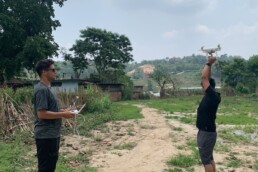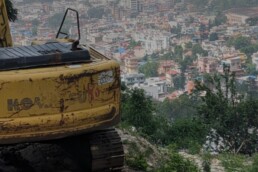
Nepal is estimated as one of the top ten fastest urbanising countries in the world and Kathmandu Valley is the hub of this growth with an estimated population of 2.54 million and growing at a rate of 6.5% per year. With this high population growth, the rate of development has also increased. Studies have shown that urban area in Kathmandu Valley (KV) expanded over 400% in last three decades (since 1989) and the majority of this expansion occurred with the conversions of agricultural land to urban areas. Studies have linked the primary causes of this rapid expansion of built of area and conversion of agricultural areas to a massive increase in rural-to-urban migration and the economic and political centrality of KV.


This large-scale land cover and land use change across the KV cityscape has pushed agriculture into what spaces remain. While rice paddy fields and agricultural areas have been built over and replaced with shops, houses and buildings, agriculture remains a defining piece at the heart of older generations of Kathmandu residents. Urban agriculture can be seen across KV and practised in the interstitial spaces between buildings new and old, in backyards, rooftops and in the cracks of the small walkways where tomatoes happily sprout.

To understand this changing space of urban agriculture in Kathmandu and the future of this medium, the Agriculture and Climate Change Working Group conducted several interviews with different agriculturalists across different neighbourhoods of Kathmandu to meet those practising agriculture in the spaces available to them. From these exploratory interviews, a short film was produced by the team showcasing the people still practising agriculture in this rapidly changing city and bringing awareness of the importance of these spaces for food production and to local culture. This film looks into the questions of who are the farmers of Kathmandu and what is their future, leaving the audience to think through what role can the government and local communities play in preserving and promoting urban agriculture and green spaces in Kathmandu for now and for future generations.



